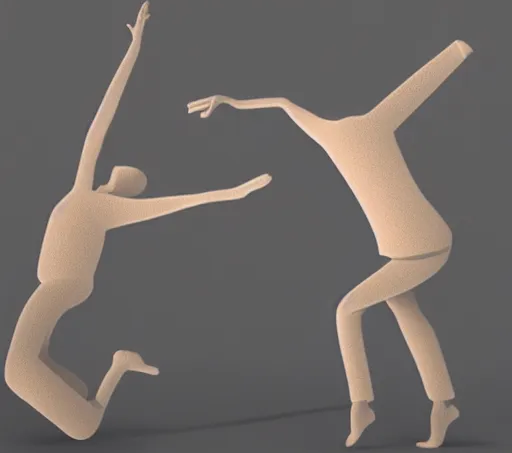
5 Simple Exercises to Finally Break Free From Your Sedentary Lifestyle Before It’s too Late
Introduction: Does Sitting Really Take Years off Your Life?
Regarding a sedentary lifestyle, you probably heard headlines in recent months saying sitting is the new smoking. This expression comes from the Department of Health and Human services which found that most people sit for more than eight hours per day. This is especially true of older adults. Researchers have found higher sitting times are linked to a higher mortality risk. The study also linked sedentary behavior and increased mortality to the prevalence of Type 2 Diabetes.
Living a sedentary life can lead to increased risk of various health problems, including obesity, heart disease, and even cancer. Unfortunately, most of us spend the majority of our day sitting – either at work or while relaxing at home. The human body was designed to move, and when we don’t give it the physical activity it needs, we are setting ourselves up for lower back pain, cardiovascular disease, and withered core muscles.
But there is good news. Starting healthy habits does not have to be difficult. By incorporating regular movement into your routine, you can improve your health and well-being. Even small changes in your routine can make an impact. Fitness and health might feel like there’s a long road stretching out in front of you. Light, however, is on the horizon.

In this blog post, we’ll explore the benefits of physical activity, share simple exercises to incorporate into your routine, and provide tips for starting slow and gradually picking it up. By the end of this post, you’ll be equipped with the knowledge you need to break your sedentary life before it’s too late.
II. Understanding Sedentary Lifestyle
A sedentary lifestyle is defined as one that involves little or no physical activity. This typically includes prolonged periods of sitting, such as working at a desk job or watching TV for hours on end. Unfortunately, this has become the norm for many people in today’s society.
The negative impact of a sedentary lifestyle can be far-reaching. Prolonged sitting has been linked to increased body fat, decreased muscle strength, and a higher risk of obesity, type 2 diabetes, and heart disease.
According to the American Heart Association and the American College of Sports Medicine, adults should aim for at least 150 minutes of moderate-intensity aerobic activity or 75 minutes of vigorous-intensity aerobic activity per week to stay healthy.
The good news is that breaking a habitual sedentary existence is possible. By making small adjustments to your routine and incorporating active movement into your day, you can improve your health, lose weight, and reduce your risk of chronic disease. In the next section, we will explore the benefits of physical activity and how it can help break the cycle of a the sedentary way of being. You will have reason to celebrate.

III. Benefits of Physical Activity over the sedentary lifestyle
Physical activity is crucial for maintaining good health and combating the effects of a being sedentary. Here are some of the most significant health benefits you can enjoy by incorporating exercise into your routine:
1. Helps Prevent Cardiovascular Disease:
Exercising strengthens your heart and improves circulation, reducing your risk of heart disease and stroke. It can also help manage high blood pressure and cholesterol levels. Good cardiovascular health is highly favorable to brain function.
2. Disease Control:
Exercise can help prevent or manage a wide range of serious health risks and problems, including diabetes, arthritis, and certain types of cancer.
3. Can Help you Lose Weight:
Combined with a balanced diet, regular physical activity helps control weight gain by burning excess calories that would otherwise be stored as fat.
4. Mental Health Benefits:
Physical activity can also improve mental health by reducing symptoms of anxiety and depression. It can also improve sleep, which is often disrupted by chronic diseases, stress, anxiety, and depression.
Exercise can affect the connection between brain and muscles. As we age, we need to maintain this connection by conscious exercise. If your sitting time is elevated, perhaps because your job requires you to sit hunched over a computer all day, you had better make sure you compensate with exercise.
Most people are aware that body composition is important and we use exercise to keep ourselves relatively trim. We are aware that our cardiovascular health is to be cared for, but the knowledge of the mind/body connection is rather more scarce.
Even a slow walk can do wonders for your brain as you can gain stronger connection to your legs and avoid problems such as falling; one of the many things we may have to deal with (with exercise if possible) as we age. Movement is important as a workout for brains as well. When you move your legs consciously as you walk, your brain is able to focus on control and balance, on muscle control.
You find yourself easily able to modulate the speed and stride of your walk. Slow walking is good, but you exercise well enough to be able to pick up the pace whenever you want.
5. Improved Strength in Major Muscle Groups and Flexibility:
Regular exercise can help increase strength, flexibility, and endurance of leg muscles. This can be particularly beneficial for reducing the risk of falls in older adults and improving functional capacity in daily activities.
Incorporating exercises that target major muscle groups and core muscles into your routine, such as push-ups for upper body strength and planks for core stability, can provide these benefits. In the next section, we’ll introduce some simple exercises that you can easily incorporate into your daily life to break your sedentary lifestyle.
IV. Simple Exercises to Incorporate into Routine
Breaking the cycle of a sedentary lifestyle can begin with small, simple steps. Here are some exercises that you can incorporate into your daily routine:
1. Walking: Walking is one of the easiest and most effective exercises you can do. Try taking a brisk walk during your lunch break, or consider walking to work if it’s feasible. Aim for at least 30 minutes of walking per day, but remember, any amount of walking is better than none.
A great idea is to reserve one day per week for a special walk in which you accept a more challenging route or a longer route, for example. This long walk should not replace your daily outings and the idea is not to challenge yourselves to any levels of intensity you are not comfortable with.
Simply allow your once-per-week walk challenge. Every time you walk, take advantage and turn it into exercise.

2. Desk Exercises: If you have a desk job, there are many exercises you can do right from your chair. Try leg extensions: while sitting, extend one leg out straight and hold for a few seconds, then lower it without letting your foot touch the ground. Repeat with the other leg.
You can also do chair squats: stand in front of your chair, lower your body down until you’re almost sitting, then stand back up. Look for opportunities in your week to dedicate as little as fifteen minutes to your health.
3. Stretching: Regular stretching can help your muscles improve flexibility and reduce the risk of injury. Try to incorporate a few minutes of stretching into your day, especially after periods of prolonged sitting.

4. Resistance Training: Resistance training can help build strength and muscle mass, which can boost your metabolism and help counteract the effects of a constant sitting around. This can be done with resistance bands, weights, or even bodyweight exercises like push-ups and squats.
5. Slow Coordinated Muscle Movement: These might include Yoga, qigong and tai chi. All of these are excellent because they allow the practitioner to start from absolute zero. These practices will teach you how to stand correctly, to improve your gait, to breath healthily. There is also a tremendous stimulation of the brain due to the balance and coordination factor.
Incorporating these exercises into your daily routine can go a long way in helping you stay active. In the next section, we will discuss how to start slow and move towards a more physically active way of facing the world.
V. Starting Slow and Moving away from the sedentary lifestyle
Embarking on a fitness journey, to break free from a sedentary lifestyle can be challenging, especially if you’ve been inactive for a long time. Here are some tips to help you start slow and make steady progress:
1. Begin with Low-Intensity Exercises: It’s essential to start with exercises that are comfortable and manageable. Low-intensity activities like walking or light stretching can be a great starting point. As your fitness level improves, gradually increase the intensity and duration of your workouts.
2. Set Realistic Goals: Setting achievable goals can provide motivation and a clear direction. Start with small goals like standing up and moving around for a few minutes every hour or during commercial breaks, then gradually increase this as your fitness improves.
3. Use Fitness Trackers: A fitness tracker can be an excellent tool for keeping you motivated and tracking your progress. Fitness trackers can monitor your steps, heart rate, and other aspects of your physical activity. They can provide valuable feedback and help you stay on track with your goals.
4. Listen to Your Body: Pay attention to how your body responds to increased activity. If you feel pain or discomfort, it may be a sign that you’re pushing yourself too hard. Remember, it’s okay to take a rest day and let your body recover. Make sure you get enough sleep.
5. Stay Consistent: Consistency is key when it comes to breaking a sedentary lifestyle. Make regular physical activity a part of your daily routine, and stick to it. Over time, these small changes can lead to big improvements in your overall health.
In our final section, we’ll wrap up and remind you of the importance of breaking your sedentary lifestyle before it’s too late.
VI. Conclusion – No More Sedentary Lifestyle
Breaking the cycle of a sedentary lifestyle is not just about adding years to your life, but life to your years. The benefits of regular physical activity extend beyond physical health, positively impacting your mental well-being and quality of life.
Remember, the goal is not to transform into an overnight athlete but to make small, sustainable changes that can significantly improve your health. Start with simple exercises, gradually increase your activity level, and stay consistent. You’ll be surprised how these little changes can make a big difference.
If you’re unsure where to start or need a personalized plan, consider consulting with a certified personal trainer. They can provide guidance, motivation, and a tailored exercise plan that suits your current fitness level and goals.
In the end, remember that it’s never too late to break your sedentary lifestyle. Every step you take towards a more active life is a step towards better health. So why wait? Start today, and pave the way for a healthier, happier future. Get moving! You might chose the graceful CogniFit Movements, learning to dance tango, slow walking or calisthenics. Do it safely! Get help from a professional and you are off! A new healthy life awaits you.
Brendan Carl Clarke













